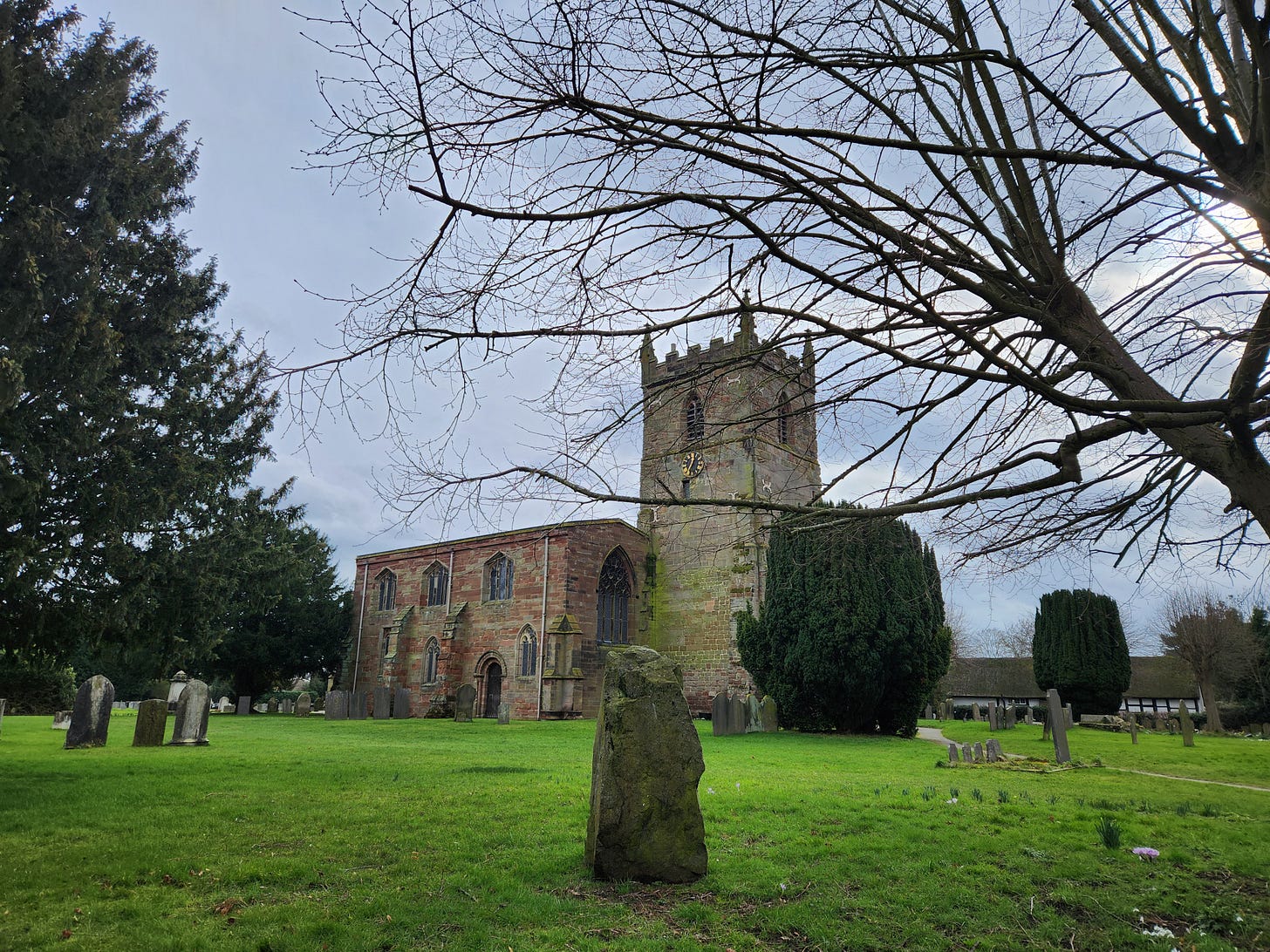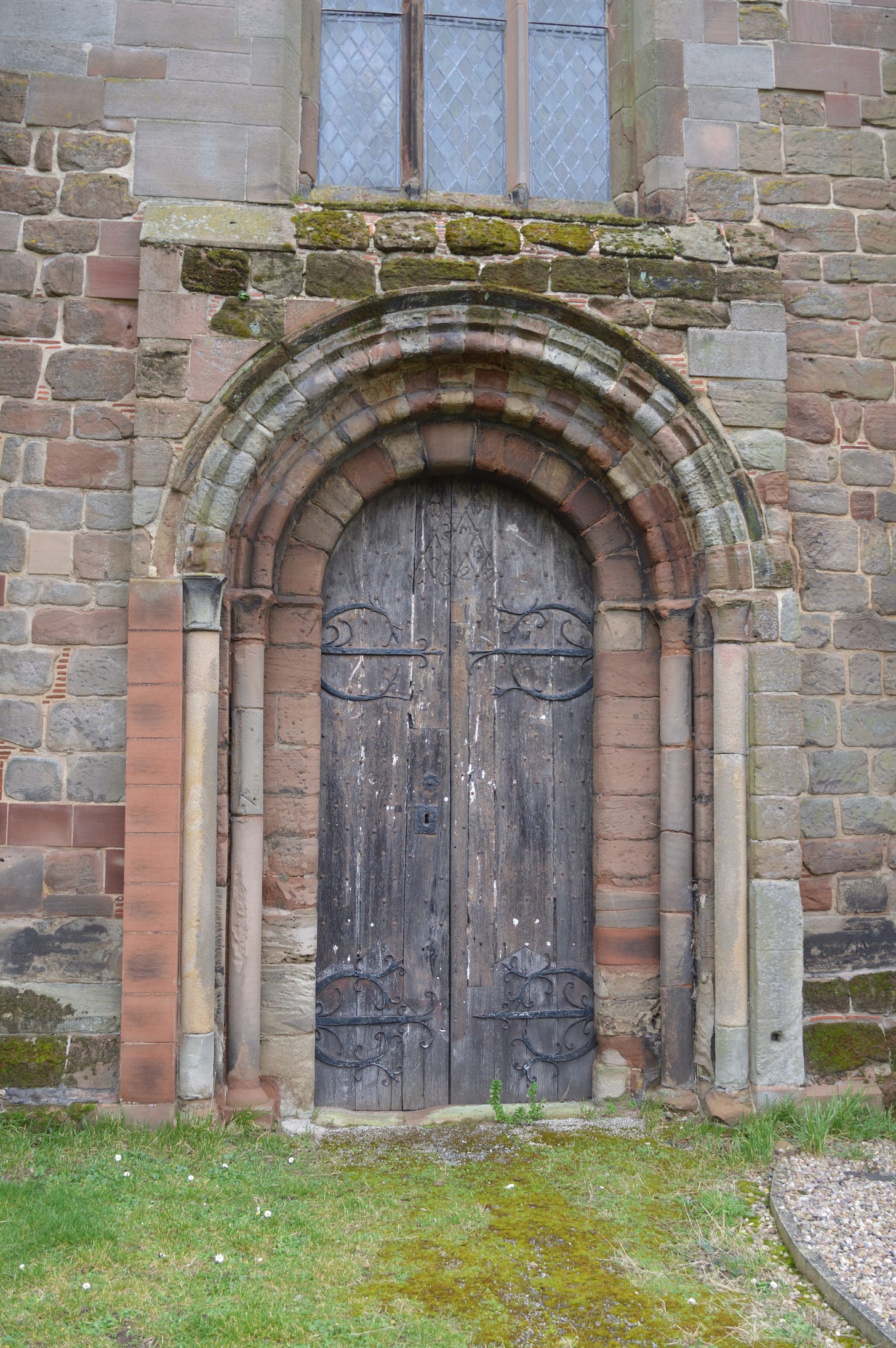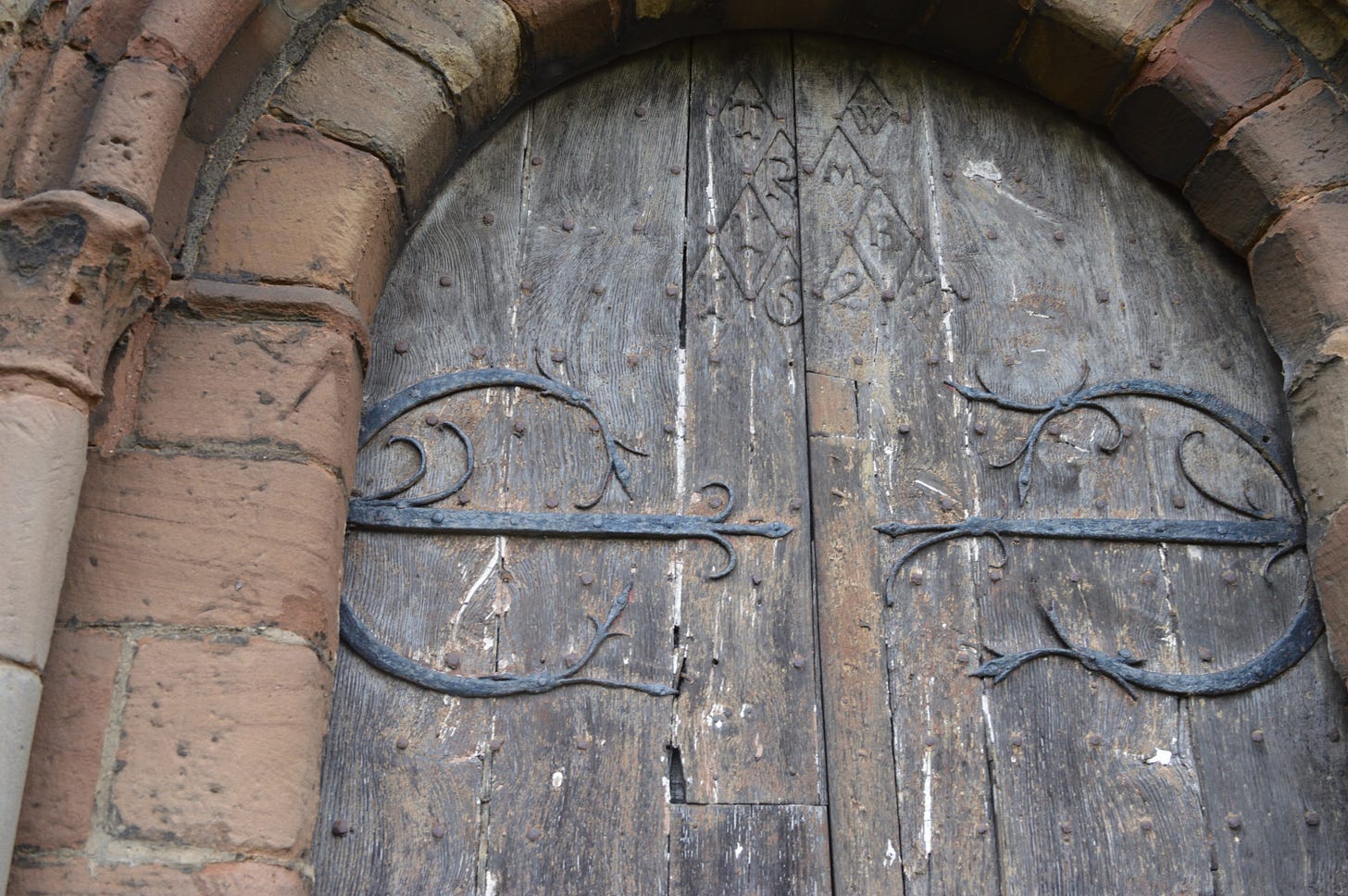This is Part 2 of the account of my recent trip to the Lichfield area.
The first church we visited on the Lichfield trip was on the outskirts of the village; the next church we visited was slap bang in the middle. Alrewas - and no, I don,t know how you pronounce it! As we drove into the outskirts we saw a sprinkling of thatched cottages, timber framed, and in some cases definitely medieval. I followed the satnav to the church; we could see the tower before we saw the church itself and suddenly I was directed into a small lane, only one car width in diameter, and found I was driving around the edge of the churchyard.
I drove in a circle and that in itself tells us a lot about this church. The graveyard in which the church sits is circular, which generally indicates it was founded in the Irish monastic missionary period of the 6th- 7th century. The graves have been mostly cleared but the churchyard extends for quite a distance around the church.
As I drove around I realised there was absolutely no parking space; eventually I discovered there was just a car length of room by the gate into the churchyard nearby. Squeezing the car in there, I got out and took this photo as the rain fell steadily. You can actually just see past the church a medieval thatched cottage with timber framing.
This church is a mix of different eras; while there must have been an early 7th century (wooden) church here, what you see is mostly 14th to 16th centuries. Interestingly, this church is on the modern pilgrimage route to Lichfield, being slightly northwest of the city. But the circular churchyard and its proximity to Lichfield undoubtedly mean that St Chad (who died in 672) would have known and visited this place. I'm not sure what the stone in the foreground of this picture is I didn't actually notice it when we arrived, only spotting it in the photos afterwards. But I wouldn't be surprised if that's some kind of remnant of an earlier structure. It's a bit of a trope that churches in the early Christian period were built on previously pagan sites, but it did happen and there are some where standing stones are left in the churchyard. The other thing about this circular churchyard is it is big enough for two churches in the Irish monastic tradition; it's also big enough for an Irish monastery.
The oldest part of the church today as this doorway which is 12th century, possibly as late as 1200. As you can see it's been repaired but it is in the classical Norman form of an arched doorway with pillars either side. The door is interesting in itself because it's 17th century and we know that because it's dated. A lot of rebuilding and renovation of churches took place in the 17th century; it's an odd thing but they started to put back the rood screens and furniture such as pulpits which they had destroyed in the Reformation a century earlier. Curiously, they had a penchant for dating things as you will see because we saw lots of Jacobean (17th century) carving on this trip.
Keep reading with a 7-day free trial
Subscribe to Incola ego sum in terra to keep reading this post and get 7 days of free access to the full post archives.






